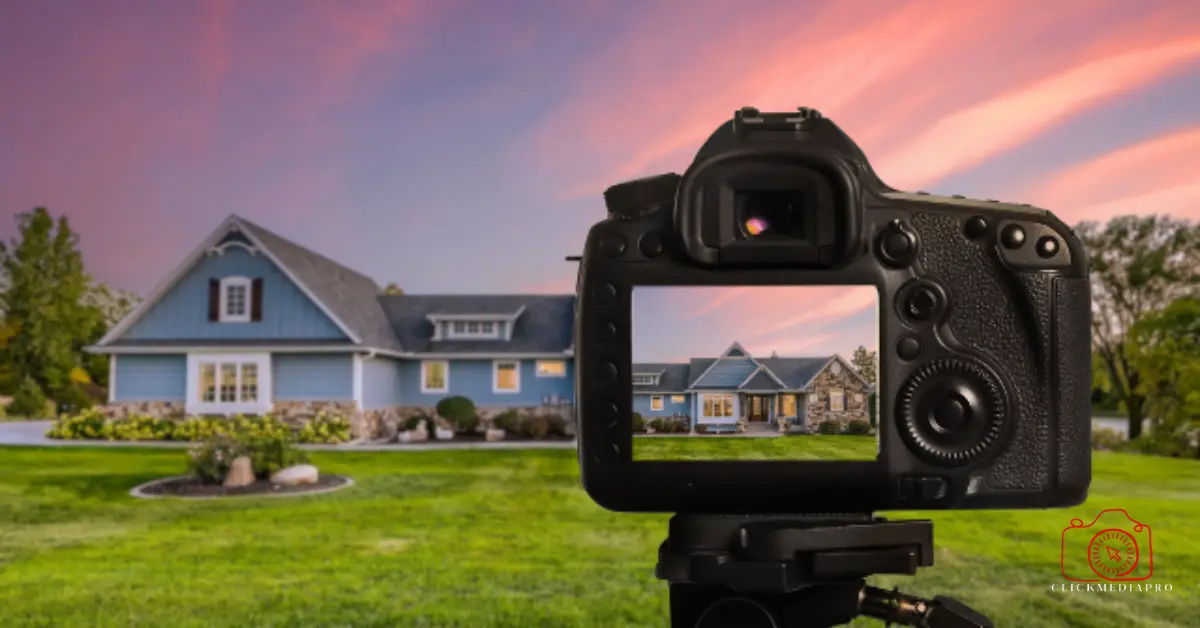Color Theory in Real Estate Photography – Real estate photography is an essential part of marketing a property. In today’s competitive market, high-quality, visually appealing photos can make all the difference in attracting potential buyers. When it comes to photography, the aesthetic appeal is often influenced by many factors, including lighting, composition, and focal length. One of the most powerful yet often overlooked elements that can significantly enhance real estate photography is color.
Color is not just about making things look pretty—it has psychological effects on viewers and can influence their emotions, perceptions, and actions. In the realm of real estate, colors can help convey a sense of warmth, openness, and coziness, or they can evoke feelings of sophistication, tranquility, and luxury. By understanding and applying the principles of color theory, real estate photographers can create inviting, balanced, and engaging images that captivate potential buyers and leave a lasting impression.
In this blog, we’ll explore how to use color theory in real estate photography, how different colors can impact buyer perception, and provide practical tips for using color to create photos that showcase properties in the best light possible.
Table of Contents
ToggleWhat is Color Theory and Why is it Important in Real Estate Photography?
Color theory refers to the understanding of how colors interact with each other and how they can be used to create aesthetically pleasing visuals. In essence, it’s the science and art of color combinations, including the relationships between primary, secondary, and tertiary colors, and the psychological impact those combinations have on viewers.
Color theory involves several key principles, including:
- The Color Wheel: A visual representation of colors arranged in a circle. Primary colors (red, blue, yellow) are positioned evenly around the wheel, and secondary colors (green, orange, purple) are created by mixing two primary colors. Tertiary colors are created by mixing primary and secondary colors.
- Complementary Colors: Colors located opposite each other on the color wheel (e.g., red and green, blue and orange). These colors create contrast and can make a design stand out.
- Analogous Colors: Colors that are next to each other on the color wheel (e.g., blue, blue-green, and green). These colors harmonize well together and create a sense of unity.
- Triadic Colors: Three colors that are evenly spaced around the color wheel (e.g., red, blue, and yellow). Triadic color schemes are vibrant and balanced.
- Monochromatic Colors: Variations of one color in different shades, tints, and tones. This creates a soothing and unified aesthetic.
In real estate photography, understanding how colors influence the mood of a space and how they can work together to create an inviting atmosphere is essential. Whether you are photographing a cozy apartment, a modern home, or a luxury estate, the right colors can make the property look more appealing to potential buyers.
How Color Influences Emotions and Perceptions in Real Estate Photography
Colors have the ability to evoke emotional responses and influence how we perceive a space. Here’s how different colors can impact the mood of a room and, in turn, the way a property is perceived:
1. Warm Colors (Red, Orange, Yellow)
Warm colors are often associated with energy, excitement, and warmth. These colors can make a space feel more inviting, cozy, and intimate, which is particularly beneficial in smaller rooms or homes where you want to create a sense of comfort. However, too much use of warm colors, particularly bright reds or oranges, can make a space feel too intense or overwhelming.
Best Uses in Real Estate Photography:
- Living rooms or family rooms: Warm colors can make the space feel inviting and livable.
- Kitchens: Yellow tones, for example, can create a cheerful, energetic atmosphere.
- Accent walls: A soft red or orange accent wall can bring warmth to an otherwise neutral space.
- Sunrooms or porches: Warm hues can mimic sunlight and create a natural sense of warmth.
2. Cool Colors (Blue, Green, Purple)
Cool colors tend to evoke feelings of calmness, serenity, and relaxation. These colors are great for spaces where you want to create a tranquil environment, such as bedrooms, bathrooms, or living rooms meant for relaxation. Cool tones also make rooms feel larger and more spacious, which can be especially useful for photographing small spaces.
Best Uses in Real Estate Photography:
- Bedrooms: Soft blues and greens can create a peaceful atmosphere, making the room feel restful.
- Bathrooms: Cool tones such as light blue or aqua can enhance the calming vibe of a spa-like bathroom.
- Living rooms: Muted cool tones can make the space feel expansive, especially in larger open-plan homes.
- Accent decor: Incorporate cool-colored throw pillows, vases, or art pieces to create visual interest without overwhelming the space.
Browse the most recent Markham real estate listings to find your perfect property in this thriving Ontario community.
3. Neutral Colors (White, Black, Gray, Brown)
Neutral colors form the backbone of many real estate interiors. They are versatile, timeless, and pair well with nearly any color palette. Neutrals can provide a clean, sophisticated, and modern backdrop that allows other colors to pop. They’re also great for creating a sense of space in smaller rooms.
Best Uses in Real Estate Photography:
- Wall colors: Soft whites, grays, or beige are classic choices for walls, allowing other design elements to take center stage.
- Flooring: Light wood floors or neutral-colored carpeting can help maintain a clean, uncluttered look.
- Furniture: Neutral furniture can anchor a space without clashing with other colors.
- Accent pieces: Brown or tan leather chairs or couches add warmth and elegance.
Explore market trends and tips for buying or selling property in Markham by visiting the ultimate Markham real estate blog.
4. Earthy Tones (Terracotta, Olive Green, Taupe)
Earthy tones, often associated with nature, have a grounded, organic quality that brings a sense of calm and connection to the environment. These colors are ideal for creating a warm, homey atmosphere in real estate photos, especially for properties that are in rural or nature-filled settings.
Best Uses in Real Estate Photography:
- Living spaces: Terracotta and olive tones can provide a cozy, inviting feel.
- Exteriors: Earthy colors are perfect for highlighting outdoor spaces and blending them with natural surroundings.
- Accent decor: Earthy-colored furniture or art pieces can bring a touch of nature indoors.
Enhance your property listings with stunning visuals by partnering with real estate photography experts in Markham at Click Media Pro.
Practical Tips for Using Color in Real Estate Photography
1. Use Color to Highlight Key Features
When photographing a property, you want to guide the viewer’s eye to the most important features. Color can be used strategically to highlight these elements. For example, you might choose a contrasting color for the wall behind a fireplace or a piece of art to draw attention to that area.
In kitchens and bathrooms, color can be used to emphasize cabinetry, backsplashes, or countertops. By using complementary or analogous colors, you can make these areas pop and emphasize the design without overwhelming the image.
2. Play with Natural and Artificial Light
Lighting is one of the most important elements in real estate photography, and it can be influenced by the colors in the room. Natural light can accentuate warm tones like reds and oranges, while artificial light (such as tungsten lights) can bring out cooler blues and greens. Experiment with different lighting conditions to see how the colors in the room respond, and use these lighting effects to enhance the atmosphere.
For example, shooting during the golden hour (early morning or late afternoon) can make warm-toned rooms appear even cozier and more inviting. Conversely, shooting during a cloudy day or at night can enhance the cool, serene tones in a space, especially when paired with artificial lighting.
3. Color Coordination and Consistency
When photographing multiple rooms in a property, aim for color consistency to create a cohesive visual flow throughout the images. This doesn’t mean all rooms should have the same colors, but there should be an overall coordination in how colors are used.
For instance, a home with an open floor plan might have a consistent color palette for both the living and dining areas, using complementary colors to tie the spaces together. In other cases, you can use analogous colors to create a subtle transition between rooms.
4. Limit Bright, Bold Colors
While bright, bold colors can make an impact, they should be used sparingly in real estate photography. Overuse of vivid colors like bright reds, greens, or purples can overwhelm the viewer and detract from the property itself. Instead, opt for more neutral tones or use bold colors as accents, such as in artwork, throw pillows, or furniture.
If you want to convey a sense of luxury, sophisticated colors like deep navy, charcoal gray, or muted gold are ideal choices for creating elegant and high-end looks without being too flashy.
5. Color Post-Processing Adjustments
While getting the right colors in-camera is crucial, don’t forget the power of post-processing to fine-tune the colors. Editing software like Adobe Lightroom or Photoshop can help enhance or adjust the hues, saturation, and vibrancy of the colors in your images. For example, you might want to warm up the tones in a living room or enhance the cool tones in a bathroom to better match the desired mood.
Conclusion – Color Theory in Real Estate Photography
Color is a powerful tool in real estate photography, capable of shaping how a property is perceived and creating a welcoming environment for potential buyers. By understanding color theory and strategically using colors to enhance the mood and atmosphere of your real estate photos, you can take your photography to the next level.
Remember that different colors evoke different emotions, and using them thoughtfully can create a sense of harmony and balance within your images. By playing with warm, cool, and neutral tones, coordinating colors across rooms, and using light to highlight key features, you can create inviting real estate photos that captivate buyers and make your listings stand out.
Whether you’re a professional real estate photographer or a homeowner preparing to list your property, applying color theory to your photos is an excellent way to ensure that your images are not only visually appealing but also emotionally resonant with your audience.

